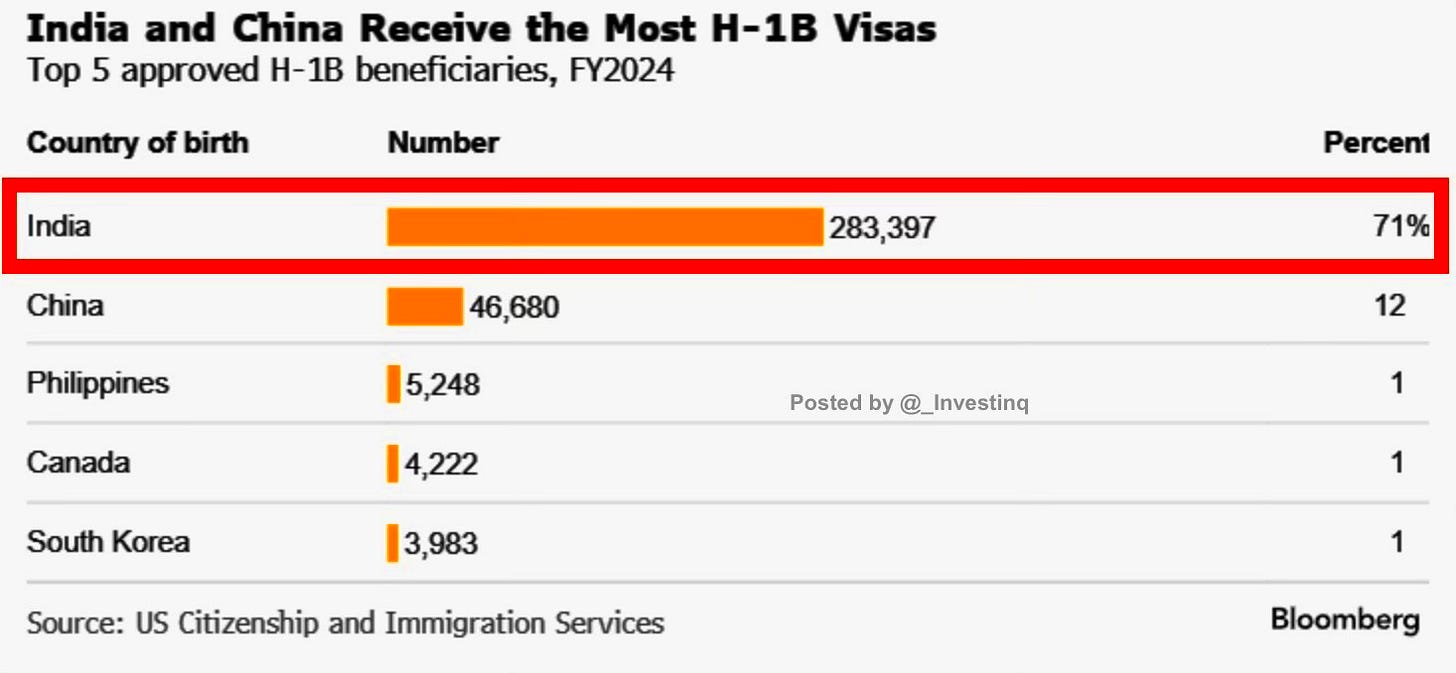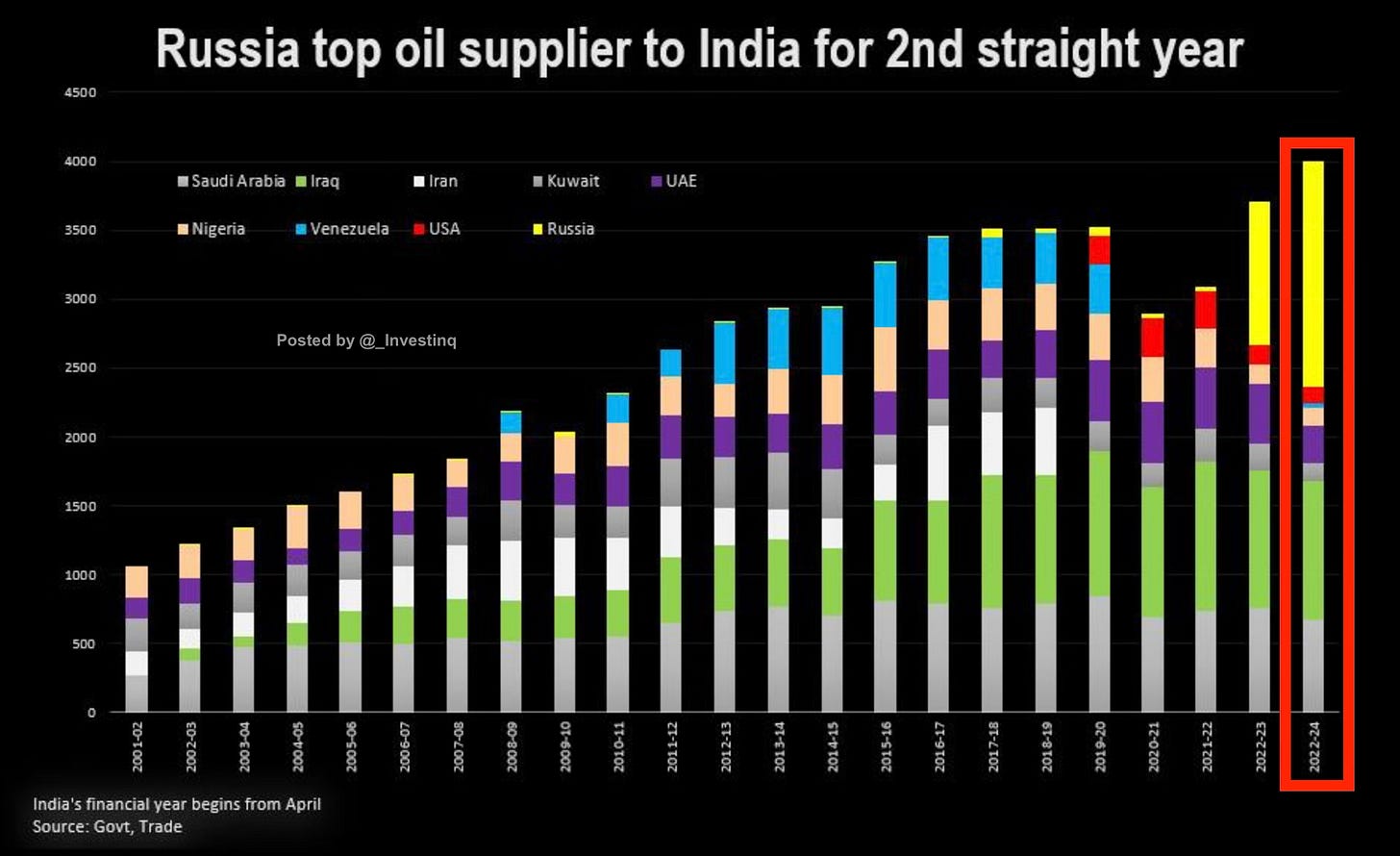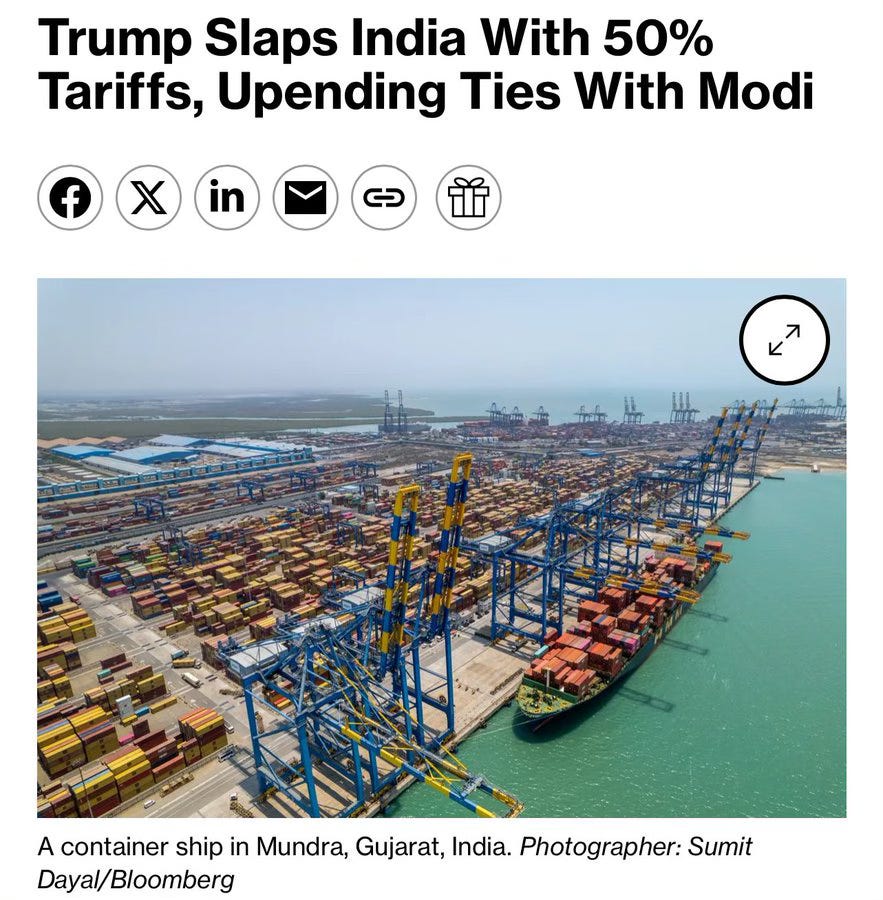Washington’s New Visa Weapon Targets India’s Energy Choices
The new $100,000 H-1B visa fee is being described as a labor market reform, but the way it’s built shows it’s something else entirely. Indian nationals dominate the program, and the country’s IT sector relies on it as a bridge to keep billions of dollars flowing through U.S. projects. The fee doesn’t touch renewals but makes new applications prohibitively expensive, which means the future of India’s IT pipeline is where the pressure lands.
At the same time, India has kept buying Russian crude in record volumes, becoming one of Moscow’s most important lifelines under sanctions. These imports are often settled outside of the dollar, a direct challenge to the financial system the U.S. has anchored global trade on. Rather than lean only on sanctions or direct energy measures, Washington is extending the fight into immigration. A visa policy becomes a form of economic pressure, hitting India where it is most globally competitive.
The broader pattern is already visible. Tariffs of up to 50% on Indian goods were put in place earlier this year, and now the H-1B fee follows. Both measures target different sectors, but they converge on the same issue: India’s energy ties with Russia. The U.S. is signaling that these ties won’t be cost-free, and the consequences will be felt in areas well outside the oil market itself.
For Indian IT companies, this is a direct threat to their operating model. Margins shrink when visas become a six-figure expense, forcing firms to either shift more delivery back home or take on the higher costs of hiring in the U.S. Families depending on overseas remittances are caught in the middle, and those flows are vital to the country’s balance of payments. The rupee already struggles under the weight of costly energy imports, and a disruption to remittances only adds more stress.
What emerges is a strategy where immigration policy is no longer separated from foreign policy. It becomes a bargaining chip in the geopolitical contest over Russian oil and the dollar’s role in global finance. The visa fee is less about American jobs and more about sending New Delhi a clear message: continued energy alignment with Moscow will bring costs in unexpected places.
That approach carries real risks. It could harden India’s resolve to keep Russian crude flowing and push it to deepen cooperation with alternative powers like China. Instead of tightening the partnership, the U.S. risks turning the relationship into a transactional standoff where every decision is measured against a price tag. What looks like a visa fee on the surface is a signal about oil, currency, and the shifting power balance in the Indo-Pacific.




I heard the “fee” isn’t retroactive. Mind you, we’ll soon find out as one of my daughter’s messaged: One of my peer managers is out of the country right now and we aren’t sure if she’ll be let back in because she’s on an H1B visa.